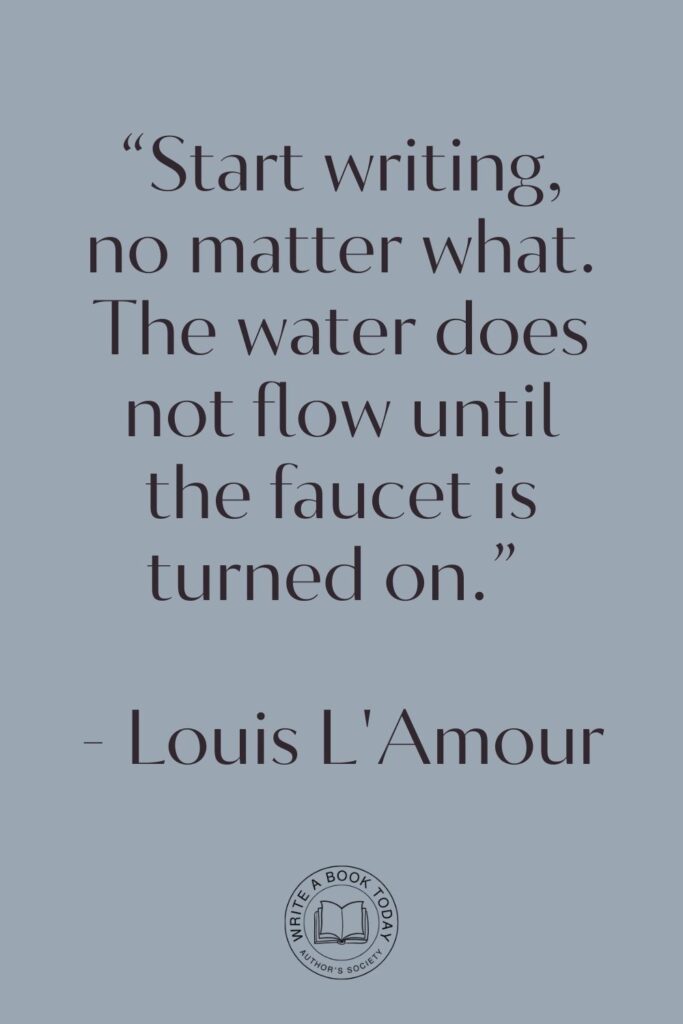Have you ever found yourself lost in a story, utterly captivated by a character’s journey, only to wonder what makes them tick? What invisible strings pull at their hearts and minds, steering their every move? The answers might surprise you.
While it’s easy to assume that characters are driven by simple desires or goals, the reality is often much more intricate. Understanding character motivation is like peering behind the curtain of a grand theater, revealing the gears and levers that bring stories to life.
This exploration will delve into the depths of what truly fuels your characters, offering insights that can transform your writing and storytelling.
Understanding Character Motivation
The foundation of any compelling narrative lies in its characters. They are the heartbeat of the story, their motivations serving as the lifeblood that propels the plot forward.
But what exactly is character motivation? It goes beyond mere wants or needs; it’s about understanding the underlying reasons why a character acts, thinks, and feels the way they do. This deeper comprehension can breathe life into flat characters, turning them into complex individuals with whom readers can empathize and connect.
Defining Character Motivation
Character motivation is the unseen force driving a character’s actions and decisions. It’s the “why” behind their journey, shaping their path and influencing their interactions. Think of it as the wind beneath a bird’s wings, unseen yet powerful enough to dictate its flight.
Whether it’s a quest for redemption, a desire for love, or an unquenchable thirst for power, these motivations stem from a character’s background, experiences, and internal struggles. Crafting these motivations requires delving into the character’s psyche, understanding their fears, dreams, and what they stand to lose or gain.
To effectively define a character’s motivation, start by crafting a detailed backstory. Consider their past experiences, upbringing, and pivotal moments that have shaped their worldview. This will provide a rich soil from which their motivations can naturally grow.
Common Misconceptions About What Drives Characters
It’s easy to fall into the trap of thinking that all characters are driven by straightforward goals like wealth or revenge. However, such assumptions can lead to clichéd and predictable narratives. In reality, motivations are often layered and complex, much like peeling an onion to reveal its many layers.
A character might seek wealth not for greed, but to prove their worth to a disapproving parent. Similarly, a quest for revenge might mask a deeper longing for justice or closure. By challenging these misconceptions, writers can craft nuanced characters whose motivations resonate with authenticity and depth.

The Psychology Behind Character Actions
To truly grasp character motivation, one must delve into the realm of psychology. It’s here that the intricate dance between conscious desires and subconscious drives unfolds, weaving the tapestry of a character’s actions. Understanding this psychological interplay can elevate storytelling, transforming it into a vivid exploration of human nature.
Exploring Storytelling Psychology
Storytelling is not just an art; it’s a reflection of the human psyche. Through tales, we explore themes of love, conflict, and identity, each story echoing the complexities of real-life experiences. By tapping into storytelling psychology, writers can create narratives that resonate on a profound level.
This involves understanding how emotions like fear, hope, and guilt can influence a character’s decisions. A character driven by fear might avoid confrontation, while one fueled by hope might take daring risks. By aligning character motivations with psychological principles, stories gain authenticity and emotional weight.
When exploring storytelling psychology, consider how real-life psychological theories can apply to your characters. For instance, Maslow’s hierarchy of needs can provide a framework for understanding a character’s motivations and priorities.
Feeling lost with your debut novel?
Fiverr Pro connects you with expert editors, designers, and marketers – everything you need to get your book ready for success!

The Role of Empathy in Character Development
Empathy is the bridge that connects readers to characters, allowing them to walk in their shoes and feel their triumphs and tribulations. In character development, empathy plays a pivotal role. It involves crafting characters whose motivations and struggles evoke genuine emotional responses.
When readers empathize with a character, they become invested in their journey, rooting for their success and feeling their pain. This emotional connection is forged through relatable motivations, ones that mirror the reader’s own experiences and emotions.
By infusing characters with empathy, writers can create stories that linger long after the final page is turned.

Building Compelling Characters Through Motivation
At the heart of every unforgettable story is a cast of compelling characters whose motivations drive the narrative forward. These characters captivate readers, pulling them into a world where motivations are not just explained but felt.
To achieve this, writers must craft motivations that resonate on both an intellectual and emotional level.
Crafting Motivations That Resonate
Creating motivations that resonate requires a delicate balance of universality and specificity. On one hand, motivations should tap into universal human experiences, such as the desire for love or the fear of failure.
On the other, they must be uniquely tailored to each character, reflecting their individual circumstances and personality. This duality ensures that motivations are both relatable and distinctive.
A character might be driven by the universal need for acceptance, yet their approach is shaped by their unique background and challenges. By weaving these elements together, writers can craft motivations that strike a chord with readers.
To craft motivations that resonate, consider the broader themes of your story and how they intersect with your character’s personal journey. This alignment creates a cohesive narrative that feels both intentional and impactful.
Relatable Examples from Literature and Film
Some of the most memorable characters in literature and film are those whose motivations are intricately woven into their stories. Take Jay Gatsby from “The Great Gatsby,” whose relentless pursuit of wealth and status is driven by a deeper longing for Daisy’s love and approval.
Or consider Katniss Everdeen from “The Hunger Games,” whose initial motivation for survival evolves into a fight for justice and freedom. These characters’ motivations are not only relatable but also evolve throughout their journeys, adding layers of complexity and intrigue.
By studying these examples, writers can draw inspiration for crafting their own compelling characters.
| Character | Motivation | Outcome |
|---|---|---|
| Jay Gatsby | Love and Approval | Tragic Downfall |
| Katniss Everdeen | Survival and Justice | Revolutionary Leader |

Challenging Assumptions in Character Development
In the realm of character development, challenging assumptions can open new avenues for creativity and depth. By questioning stereotypes and exploring the multifaceted nature of motivations, writers can break free from conventional molds and breathe life into their characters.
Going Beyond Stereotypes
Characters confined to stereotypes often lack the depth and authenticity that make them memorable. To create truly compelling characters, writers must venture beyond these simplistic portrayals. This involves recognizing and subverting common stereotypes, crafting motivations that defy expectations.
A villain might harbor a deep-seated fear of abandonment, while a hero might grapple with self-doubt. By peeling back the layers of stereotype, writers can reveal the rich, complex motivations that lie beneath, inviting readers to explore the nuances of human nature.
Google Docs is for notes. Scrivener is for novels. Upgrade your writing game and try it for free today!

Empowering Writers to Explore Depth
Empowering writers to explore the depths of character motivation involves encouraging them to ask “why” at every turn. Why does a character make a particular choice? What internal conflicts shape their actions? By diving into these questions, writers can uncover motivations that add richness and authenticity to their characters.
This process enhances character development and fosters a deeper understanding of the human experience, offering readers a window into the complexities of life.

Practical Tips for Writers
Practical techniques and tips can serve as invaluable tools for writers seeking to unravel the mysteries of character motivation. These strategies can illuminate the path to creating characters whose motivations resonate with depth and authenticity.
Techniques for Uncovering Character Motivations
Uncovering a character’s motivations begins with understanding their core desires and fears. Techniques such as freewriting, character interviews, and mind mapping can help writers delve into their characters’ psyches. Freewriting allows for the spontaneous flow of ideas, revealing hidden motivations.
Character interviews involve asking characters probing questions, while mind mapping visually explores connections between motivations and actions. These techniques can illuminate the intricacies of character motivation, guiding writers toward a deeper understanding of their characters.
- Freewriting: Unleash creativity without judgment.
- Character Interviews: Dive deep into your character’s mind.
- Mind Mapping: Visualize connections and motivations.
No marketing platform? No social following? No problem!
Publisher Rocket helps you market your debut novel like a pro.
It’s a gamechanger for debut authors – try it today!


Experimenting with Character Arcs
Character arcs are the transformative journeys that characters undergo throughout a story. Experimenting with these arcs involves exploring how motivations evolve over time. A character might begin with a singular goal, only to have their motivations shift as they encounter challenges and revelations.
By experimenting with different arcs, writers can create dynamic characters whose growth mirrors the ebb and flow of real life. This experimentation not only enriches character development but also keeps readers engaged, eager to witness the unfolding of each character’s journey.
When experimenting with character arcs, consider how external events and internal conflicts interact to shape a character’s transformation. This interplay adds depth and realism to the character’s journey.

The Transformative Power of Understanding Motivation
Understanding character motivation is not just an exercise in storytelling; it’s a transformative journey that reshapes how writers approach their craft. By delving into the motivations that drive characters, writers can unlock new dimensions of creativity and storytelling prowess.
How Motivation Shapes Story Arcs
Motivation is the cornerstone upon which story arcs are built. It influences the direction of the plot, the conflicts characters face, and the resolutions they seek. A well-crafted motivation can propel a character through a series of trials, leading to moments of triumph or tragedy.
As motivations evolve, so too do the story arcs, creating a dynamic narrative that captivates readers. By understanding how motivation shapes story arcs, writers can craft tales that resonate with authenticity and emotional depth.
Inspiring Creativity in Your Writing
At its core, understanding character motivation is a catalyst for creativity. It encourages writers to explore uncharted territories, to push the boundaries of conventional storytelling. By embracing the complexities of human motivation, writers can infuse their work with originality and innovation.
This exploration not only enhances character development but also inspires new ideas and perspectives, enriching the storytelling experience. As writers delve into the intricacies of character motivation, they unlock the potential for narratives that are both compelling and transformative.
In the end, the journey of unlocking the secrets of character motivation is one that leads to richer stories and more profound connections with readers. By embracing this journey, writers can create characters that linger in the hearts and minds of their audience, leaving an indelible mark on the world of storytelling.








